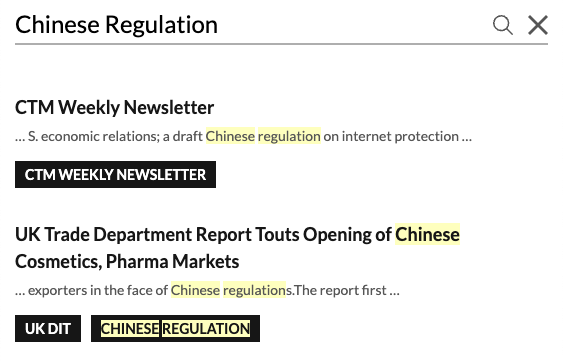During an August 23 press conference (link in Chinese) held by the State Council Information Office, officials from China’s Ministry of Commerce expressed interest in pursuing free trade agreements, as they referred to foreign investment and international trade as key parts of China's dual circulation development model.
The press conference covered recent developments in both domestic circulation and dual circulation. MOFCOM Minister Wang Wentao and MOFCOM Vice Ministers Wang Shouwen and Qian Keming attended the press conference.
China’s development model of dual circulation centered on domestic circulation was introduced (link in Chinese) in May of 2020. Domestic circulation focuses on the development of the domestic market and domestic supply chains, while dual circulation refers to both the domestic market and international trade and supply chains. Wang Wentao said that domestic trade, foreign investment, and international trade are all important to dual circulation.
Applauding foreign investment’s role in China’s development, Wang Wentao said foreign investment created 40 million jobs in China and generated ⅙ of China’s tax revenue, and is an indispensable part of China’s domestic and dual circulations.
To further facilitate foreign investment, China will continue opening up, Wang Wentao said. He touted China's progress in expanding market access, especially in auto, finance and securities, and reducing the items on the investment negative list from 93 to 33. China will continue shortening the negative lists, and creating a better environment for foreign investments by offering better services and better protections for their legal interests, Wang said.
Wang Shouwen mentioned that China has signed 19 FTAs with 26 countries and regions, which has facilitated China's trade and investment relations. For instance, trade with FTA partners accounted for 35 percent of all Chinese foreign trade, up from 12.3 percent in 2012. Chinese trade with its FTA partners grew by 3.2 percent in 2020, compared to 0.8 percent trade growth with non-FTA partners.
FTAs help China to lower trade barriers, according to Wang Shouwen. With regard to tariffs, China’s MFN tariffs are 7.5 percent on average, but 90 percent of trade with FTA partners faces zero tariffs, Wang said. In terms of services trade, China has enhanced its openness in 57 sectors through RCEP, 22 of which are new commitments and the rest are an expansion of its WTO commitments, according to Wang.
FTAs also facilitate the flow of investments, Wang Shouwen pointed out. In 2020, nearly 70 percent of Chinese outbound investment went to FTA countries, and 84 percent of the foreign investment in China came from FTA partners.
"China will sign more FTAs in order to deepen the opening-up policy," Wang Shouwen said. In particular, China will accelerate negotiations of the China-Japan-South Korea Free Trade Agreement, and FTA negotiations with the Gulf Cooperation Council, Israel and Norway; update the FTAs with Singapore and South Korea; “actively consider joining the CPTPP”; and create a free trade zone network that would connect the Belt and Road Initiative participants. The FTAs will also help China transition smoothly from a rapid growth period due to its quick recovery from the pandemic to a post-pandemic era, Wang Wentao added.
Wang Shouwen also emphasized China’s support for WTO negotiations: “China is an active participant, firm defender and an important contributor to the multilateral trading system.” China hopes WTO negotiations in fisheries subsidies and COVID-related areas come to fruition and some progress on Appellate Body reform is achieved by the 12th Ministerial Conference in November, Wang said.

